The Hidden Risk of Treating AI Integration in Your Organization Like a Personal Productivity Hack
Using AI as an individual is not the same as using AI in an organization.
As a leader you’ve likely hired a team of digital teammates, without even realizing it.
They entered our organizations without interviews, onboarding, or oversight.
No clear roles. No accountability. No alignment to our goals.
It’s time for a roll call on your AI tools.
Who’s actually adding value?
Who’s being lazy and just substituting outdated practices with new technology?
And who never should’ve been on the team to begin with?
We’re in this situation because tools like ChatGPT didn’t enter through systems, they scaled through individuals. It took Netflix over five years to reach one million users. ChatGPT reached that milestone in just two months. That kind of acceleration hasn’t just disrupted workflows, it’s disrupted how technology enters the workplace altogether.
Adoption happened not through planning, but through curiosity, late-night experimentation, and a flood of social media content inviting people to try the latest hack and prompt. And it’s left many organizations feeling like they’re already behind before they’ve even started.
Over the past year, I’ve seen this friction point up close while working with schools, companies, and leadership teams. There’s often a clear intention behind how AI is being introduced into organizations. Leaders want to empower their people. They want to create space for autonomy, experimentation, and exploration. They don’t want to micromanage something that’s still evolving, and that instinct reflects a healthy kind of leadership. In many cases, teams are simply adopting the tools people are asking for. A teacher hears about a tool in a PD session, someone shares a link in a group chat, and suddenly it's being used in classrooms or meetings without much structure behind it.
But good intentions alone aren’t enough.
When it comes to AI, that hands-off approach can quietly backfire.
I hear phrases like “Let’s just let people teach people” or “We’ll figure it out as we go,” or our coaches are amazing they are leading PD sessions. And while that sounds empowering, it often leads to something very different: fragmented use, unclear expectations, and growing disparities between those who feel confident using AI, and those who don’t. What was meant to be an open door can quickly become a leadership gap.
Many organizations already have a clear vision. They’ve created thoughtful graduate profiles, mission statements, or learner outcomes that reflect what they hope to develop in their people. But too often, those ideas remain just that: ideas. They live on posters, websites, and slide decks, but aren’t consistently connected to the tools we adopt or the decisions we make day to day.
The issue isn’t that we lack clarity about what matters, it’s that we haven’t built the systems to bring that vision to life. AI gives us a unique opportunity to change that. But only if we move from symbolic alignment to structural alignment, where our use of technology actually reinforces the values we’ve already said are important.
One of the challenges is how quickly the technology continues to move, while the people inside our organizations are carrying a lot. They’re leading teams, managing deadlines, and responding to constant change. Some are experimenting with AI every day. Others are still trying to understand what it even is. Almost everyone I speak with, myself included, is navigating a mix of excitement and overwhelm. We want to do this well, but we’re still figuring out what “well” even looks like.
That’s the reflection I spent much of June reflecting on. Where do I want to focus? Where can I create clarity, not just enthusiasm? What kind of leadership is actually needed right now? These are the questions that brought me back to a simple truth:
Adopting AI isn’t just about enabling individual use. It’s about making collective decisions. And that means shifting from AI as a personal assistant to AI as a true member of our team - a digital workforce that must be led with the same clarity and care as our human one.
The Missing Lens: Individual Use vs Organizational Leadership
There’s a quiet assumption in many organizations right now that if individuals are using AI, the organization must be making progress. But those two things are not the same. Individual use often looks like experimentation. It’s fast, intuitive, and sometimes messy. People explore different tools, try prompts that work for them, and use AI in ways that reflect their own goals, needs, and comfort levels. That’s how most of us began, and that’s how generative AI became so widespread so quickly.
But leadership requires something else entirely.
In 2024 I shared this vision for how to build AI teams in my book, and in 2025 the Microsoft Work Trend Index also shared that this is the transition we must focus on making.
Organizations need structure, not just experimentation. They need alignment, not just access. If we’re going to treat AI as a teammate, then we can’t rely on personal preference to drive adoption. We need a shared way to make decisions about when, why, and how AI is used across our teams. This is the missing lens.
By the end of 2025, every individual should be able to articulate a new kind of org chart, one that merges the human and digital workforce. This isn't just about naming which tools you're using. It’s about defining who does what: where AI supports, where humans lead, and how they work together.
Last year we worked with Desert Sands Unified School District to pioneer this approach in schools creating a decision-making framework for delegating tasks across human and AI teammates. It helped their teams clarify not just what AI could do, but what it should do. It gave people language for when to collaborate with AI, when to review its output, when to rely on human expertise, and how to share their decision making process.
You can view the guidance and decision making framework called RISE here.
These kinds of frameworks matter. They build confidence, reduce friction, and prevent the kind of invisible drift that happens when everyone is experimenting in isolation. Most importantly, they shift the conversation from compliance to collaboration, from asking “Is this allowed?” to “What’s the smartest way to approach this as a team?”
Let’s pause here for a moment. If you’re unsure whether this is a challenge in your own organization, try this:
Look at your graduate profile or learner outcomes. Then look at how AI is currently being used across your team.
If your AI tool were a person, a real teammate would you keep them on payroll?
Would you say they’re helping you reach your vision?
Or are they showing up randomly, untrained, and inconsistent with your goals?
This is your moment of truth:
Imagine if every employee started hiring their own assistant, with no oversight, no training, no shared expectations, and no coordination with the rest of the team. That’s how most organizations are treating AI right now.
We’re flooded with prompt libraries and template packs, many of which aren’t bad, but also aren’t aligned to anything deeper. They assume the goal is speed, not impact. They offer one-size-fits-all shortcuts, not role-based clarity. And they reinforce the idea that AI is just a tool to master, not a teammate to delegate to, to train, and to lead.
And if you’re not clear on what AI’s job is in your organization, don’t be surprised when it doesn’t show up the way you hoped.
If your outcomes are outdated, your AI use will be too.
If your vision is still optimized for yesterday’s world, today’s tools won’t help much. But if your goals are bold, human-centered, and future-facing, AI can help you reach them faster, more creatively, and with deeper focus.
To help organizations see this clearly, I have been sharing the following decision-making tool to see the difference between using AI as an individual, and using it as an organization. These questions are a starting point for your team to start moving the conversation from: What can this tool do to what kind of teammates are we actually inviting into our work?
This lens helps organizations pause and ask better questions:
What is AI actually doing for us?
Is it embedded into our workflows, or floating around on the edges?
Are we designing this intentionally, or hoping for the best?
That pause is what creates space for leadership. And it’s what prepares you for the next step: hiring AI like you would hire a real teammate.
Time to HIRE AI - A Framework For Leaders
If AI is becoming a teammate, not just a tool then it’s time we start onboarding it like one. We’d never hire a new employee without clarity on their role, expectations, support, and performance. And yet that’s exactly what most organizations are doing with AI. It’s brought in informally, used inconsistently, and judged on output without ever being told what success actually looks like.
That’s why I shared the HIRE Framework last year in my book, “Designing Schools,” a simple way to help leaders move from reactive AI adoption to intentional team integration. It mirrors the same questions we ask when hiring real people. Because whether your teammate is human or not, leadership still matters.
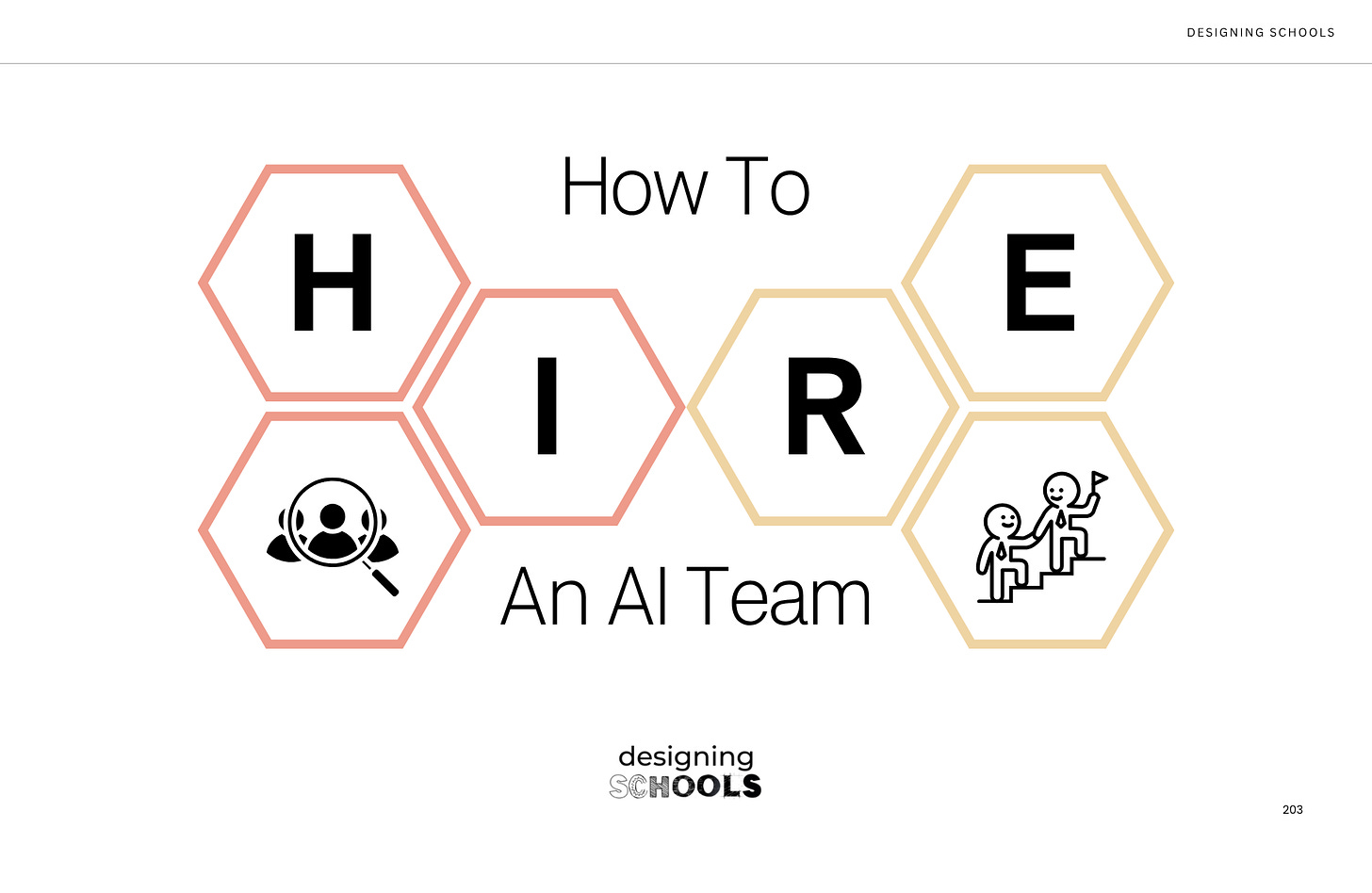
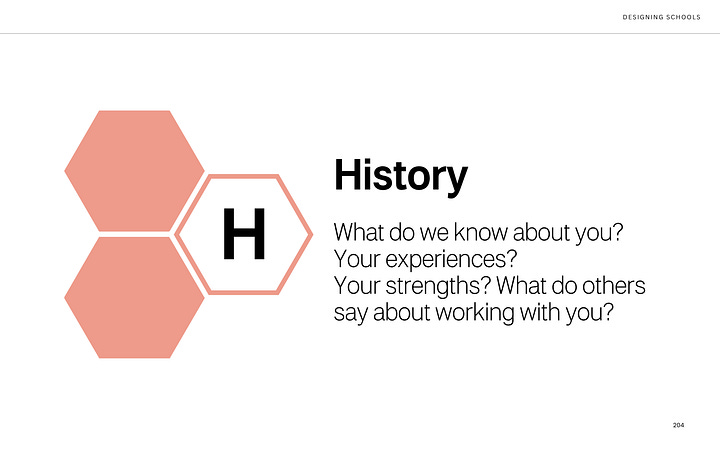
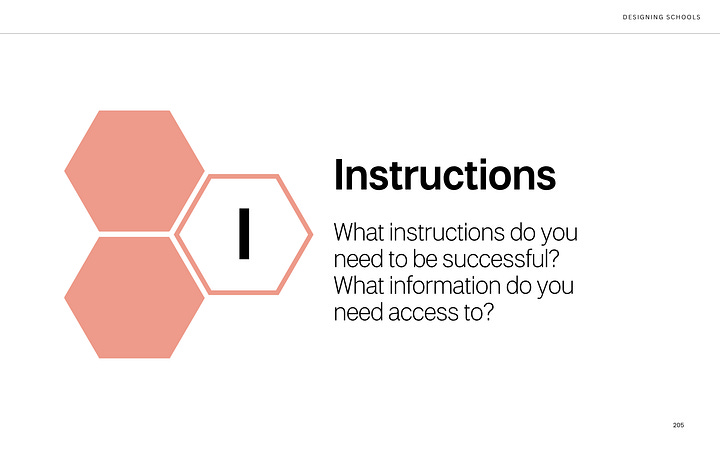
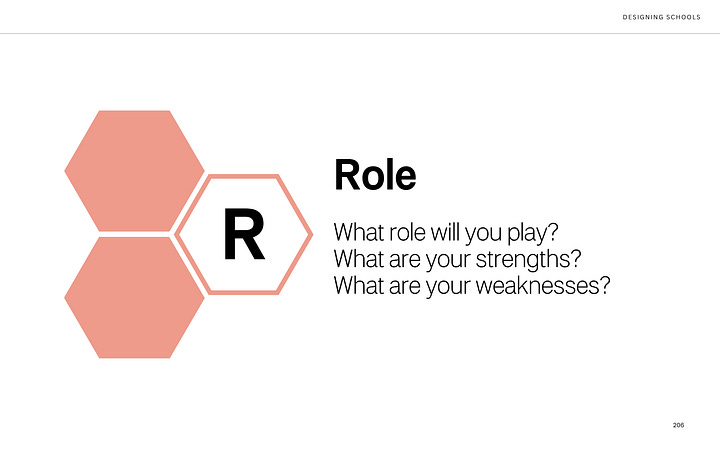
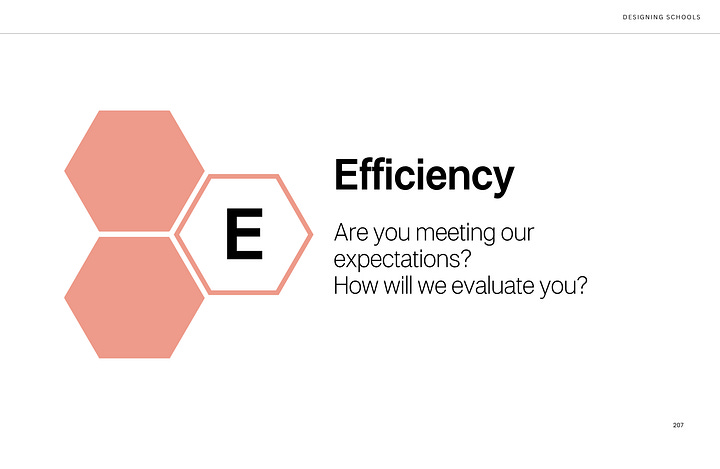
This framework isn’t about adding friction. It’s about creating alignment. So AI isn’t just showing up but showing up well. So your teams don’t feel lost but feel empowered. So you’re not just integrating a tool but building a system of shared intelligence. Because in the end, you’re not just adopting AI, you’re leading with it. And leadership starts with intention.
From Momentum to Leadership: The AI Power Circle
When I first created our signature online course and in person experience, “The AI Bootcamp” it was designed to empower individuals, those early adopters who saw the potential, stepped up in their communities, and started building momentum from the ground up. And it worked. We saw educators, school leaders, and innovators begin using AI to rethink lessons, improve workflows, and reimagine what was possible.
But now, they’re ready for more.
Because momentum isn’t the same as alignment.
And knowing how to use AI personally isn’t the same as knowing how to lead with it across a team, a district, or an organization.
That’s why this year, we’re evolving.
The AI Bootcamp is becoming the AI Power Circle, a new space for leaders who are ready to design what’s next. Not just explore tools, but shape systems. Not just react to change, but build the culture, strategy, and clarity their teams need to thrive.
The Power Circle is where leadership gets real. It’s where we make the shift from tool to teammate, from AI use to AI vision.
It’s where you don’t just ask, ‘What can AI do?’ You ask, ‘What kind of organization do we want to become? You can learn more about The AI Power Circle here.









This really, really resonates. What do you recommend to employees / teachers looking for their organization to take a more proactive leadership approach?
This is a brilliant piece of writing Sabba 🙏
Thank you.
Loved the HIRE framework.